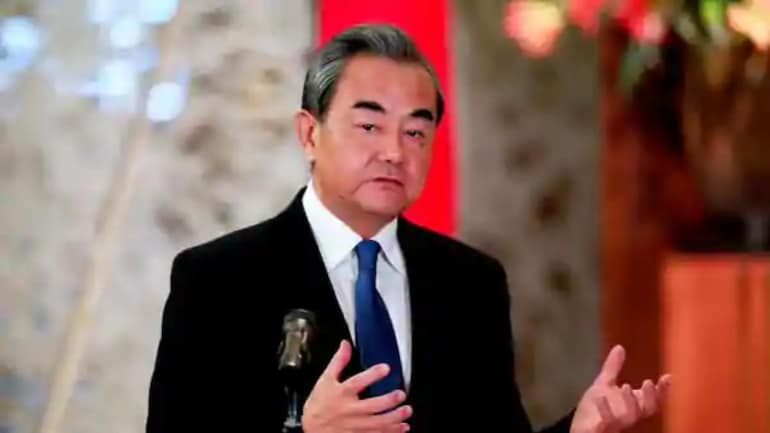
SOURCE: INDIA TODAY
Four and a half months after India conducted its South Asia outreach in wake of the coronavirus pandemic on March 15, China hosted its first-ever South Asia quadrilateral meeting with foreign ministers from Pakistan, Nepal and Afghanistan. With half the size of what India managed, Beijing’s sole message to the other two important countries in the neighbourhood, Afghanistan and Nepal, was to follow Pakistan’s footsteps.
Presiding over a virtual meeting with his counterparts from the three countries, China’s foreign minister Wang Yi said learning from the Sino-Pakistan cooperation, Afghanistan and Nepal should expand four-nation joint prevention and control of Covid-19 and make arrangements for epidemic prevention, resumption of economic activity and personnel exchanges.
Coming on the back of the major India-China border tensions, Wang cited the example of “iron brother” ties between Islamabad and Beijing.
Under the premise of strict epidemic prevention, China asked the two nations to open up personnel “fast channels” and logistics “green channels” as soon as possible, strengthen joint prevention and control in border areas at land ports, and formulate jointly recognised standard operating procedures for epidemic notification, epidemic prevention management and control, and emergency handling.
The video conference, organised by Beijing ostensibly to discuss the Covid-19 pandemic, was held against the backdrop of the months-long India-China border standoff. Given India’s currently strained ties with Nepal, the meeting is unlikely to go down well with the foreign policy establishment in New Delhi.
As for Pakistan, Wang himself cited the example of “iron brother” ties between Islamabad and Beijing. Emphasising that having good neighbours is “good fortune”, Wang called on Nepal and Afghanistan to follow the example of Sino-Pakistan cooperation to fight the pandemic.
India had held a major SAARC video conference on March 15, attended by Presidents of Afghanistan, Maldives and Sri Lanka; the Prime Ministers of Bangladesh, Nepal and Bhutan, the Minister of State for Health of Pakistan, and the Secretary-General of SAARC.
During the video conference, China also stressed that the four countries should also “actively promote the construction of the China-Pakistan Economic Corridor and the trans-Himalayan three-dimensional interconnectivity network, support the extension of [CPEC] to Afghanistan, and further release the regional interconnection dividend”.
Representing Pakistan, economy minister Makhdum Khusro Bakhtiar praised cooperation on China’s Belt and Road Initiative, which New Delhi vehemently opposes since it passes through Pakistan Occupied Kashmir (PoK).
The deliberate exclusion of India fit the Chinese narrative and allowed Beijing the space to further its BRI pitch. India, on the other hand, has been ahead of the curve when it comes to the South Asia cooperation or for that matter the QUAD military cooperation of the most influential countries in the Indo-Pacific, India, Japan, US and Australia.
While China highlighted the need to “maintain the stability of the industrial chain and supply chain, and create new economic growth points in the digital field”, India focussed on building a corpus to tide over the economic crisis. India made the initial contribution of US $10 million.
In a statement issued on March 16, Ministry of External Affairs said, “Prime Minister Modi underscored, the SAARC region could set an example to the world, for regional coordination to address complex cross-border challenges. He suggested in this context the establishment of a SAARC Emergency Response Fund for Covid-19, with the initial US $ 10 million-contribution from India.”
While China spoke of enhancing “cooperation in the fight against the epidemic and vaccines”, India offered to “deploy its specially-constituted Rapid Response Teams of medical and other professionals, and testing equipment, to any SAARC partner country”.
Support was also offered by India for capacity-building including through online training modules, the establishment of a repository of best practices of dealing with Covid-19 at SAARC Disaster Management Centre, and a website with information in each of the SAARC languages.
India also offered to share its software for Integrated Health Information for Disease Surveillance.
The Chinese foreign ministry statement said, “After China’s vaccine research and development is completed and put into use, it will be used as a global public product to increase the availability of vaccines in the three countries [Pakistan, Afghanistan, Nepal] and help the three countries to strengthen the construction of their public health systems.”
The MEA statement said, “India also offered support by the Indian Council for Medical Research (ICMR) for a platform of SAARC States to share ideas for diagnostic and the therapeutic intervention for epidemics.”
Both the Asian giants are vying for diplomatic space in the region. For now, China has copied India’s SAARC move albeit at a much smaller scale.






